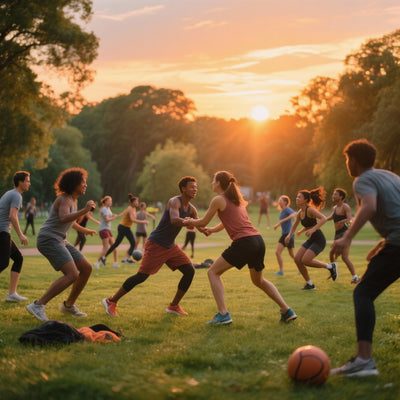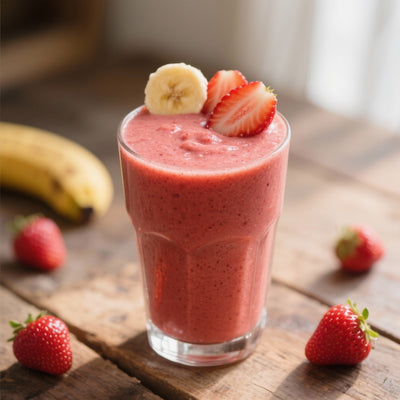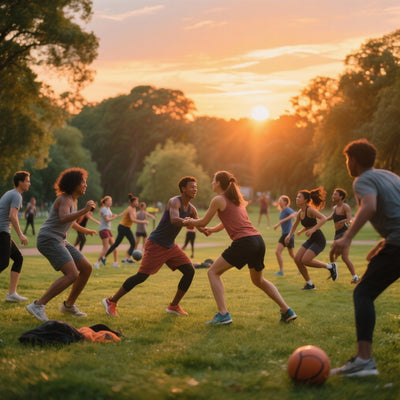Why Does Doing Cardio on an Empty Stomach Really Destroy Your Muscle Mass?
Fasted cardio, a popular practice among those looking to lose weight quickly, sparks a heated debate. On one side, its fat-burning benefits are touted. On the other, there are fears that it will devour precious muscle mass. So, is it fact or fiction? This comprehensive guide demystifies the issues surrounding fasted cardio and helps you make informed decisions for your training and your health.
Together, we will explore the biological mechanisms involved, existing scientific studies, and strategies to minimize potential risks. The goal is to give you the tools to understand whether fasted cardio is suitable for your goals and body type, without compromising your muscle mass.
What is Fasting Cardio?
Fasted cardio involves performing cardiovascular activity (running, cycling, brisk walking, etc.) after a period of fasting, usually after a night's sleep. The idea is that, with glycogen (stored glucose) reserves low, the body will more quickly draw on fat reserves for energy. Is this metabolic mechanism truly effective?
Metabolism During Fasting: What Really Happens
During fasting, the body enters a different metabolic state. Insulin levels are low, which promotes lipolysis (fat breakdown). However, the body can also begin to break down muscle protein (catabolism) to obtain glucose via gluconeogenesis, a metabolic process that allows the body to create glucose from non-carbohydrate sources.
Fasting Cardio and Muscle Mass Loss: The Link
The main concern regarding fasted cardio is muscle loss. Several factors can contribute to this phenomenon:
- High cortisol levels: Fasting can increase levels of cortisol, a catabolic hormone that promotes the breakdown of muscle proteins.
- Lack of available energy: With low glycogen reserves, the body can use amino acids (from muscles) as an energy source.
- Exercise intensity: High-intensity fasted cardio increases the risk of muscle catabolism.
It is important to note that muscle loss is not inevitable. It depends on the intensity and duration of exercise, your overall nutritional status, and your genetics.
What do scientific studies say?
Studies on fasted cardio have yielded mixed results. Some show an increase in fat burning, while others find no significant difference compared to cardio performed after a meal. Regarding muscle loss, studies are less numerous and often conducted on small samples. Therefore, it is difficult to draw definitive conclusions.
"Science is constantly evolving. It is crucial to critically evaluate the evidence and adapt it to your own situation."
How to Minimize Risks and Preserve Your Muscle Mass
If you want to try fasted cardio, here are some strategies to minimize the risks:
- Moderate the intensity: Opt for low to moderate intensity cardio (brisk walking, low resistance cycling).
- Limit the duration: Do not exceed 30-45 minutes.
- Take BCAAs: Consume branched-chain amino acids (BCAAs) before and after training to limit muscle breakdown.
- Ensure sufficient protein intake: Your diet should be rich in protein to promote muscle recovery.
- Listen to your body: If you experience excessive fatigue or muscle pain, stop fasting cardio.
Alternatives to Fasted Cardio
If you are worried about losing muscle mass, there are effective alternatives for burning fat:
- Cardio after a light meal: Consume a small portion of carbohydrates and protein before training.
- High-intensity interval training (HIIT): HIIT is an effective method for burning fat and preserving muscle mass.
- Weight training: Weight training is essential to develop and maintain your muscle mass, which increases your basal metabolic rate and helps you burn more calories at rest.
Conclusion: Fasted Cardio, a Personal Choice
Fasted cardio can be an effective fat-burning strategy, but it carries potential risks to muscle mass. It's crucial to assess your individual situation, moderate the intensity and duration of your exercise, and maintain a protein-rich diet. If you have any doubts, consult a registered dietitian or personal trainer. Remember: the goal is to improve your health and well-being, not compromise your muscle mass.
Discover our other articles on sports nutrition and weight loss here .











